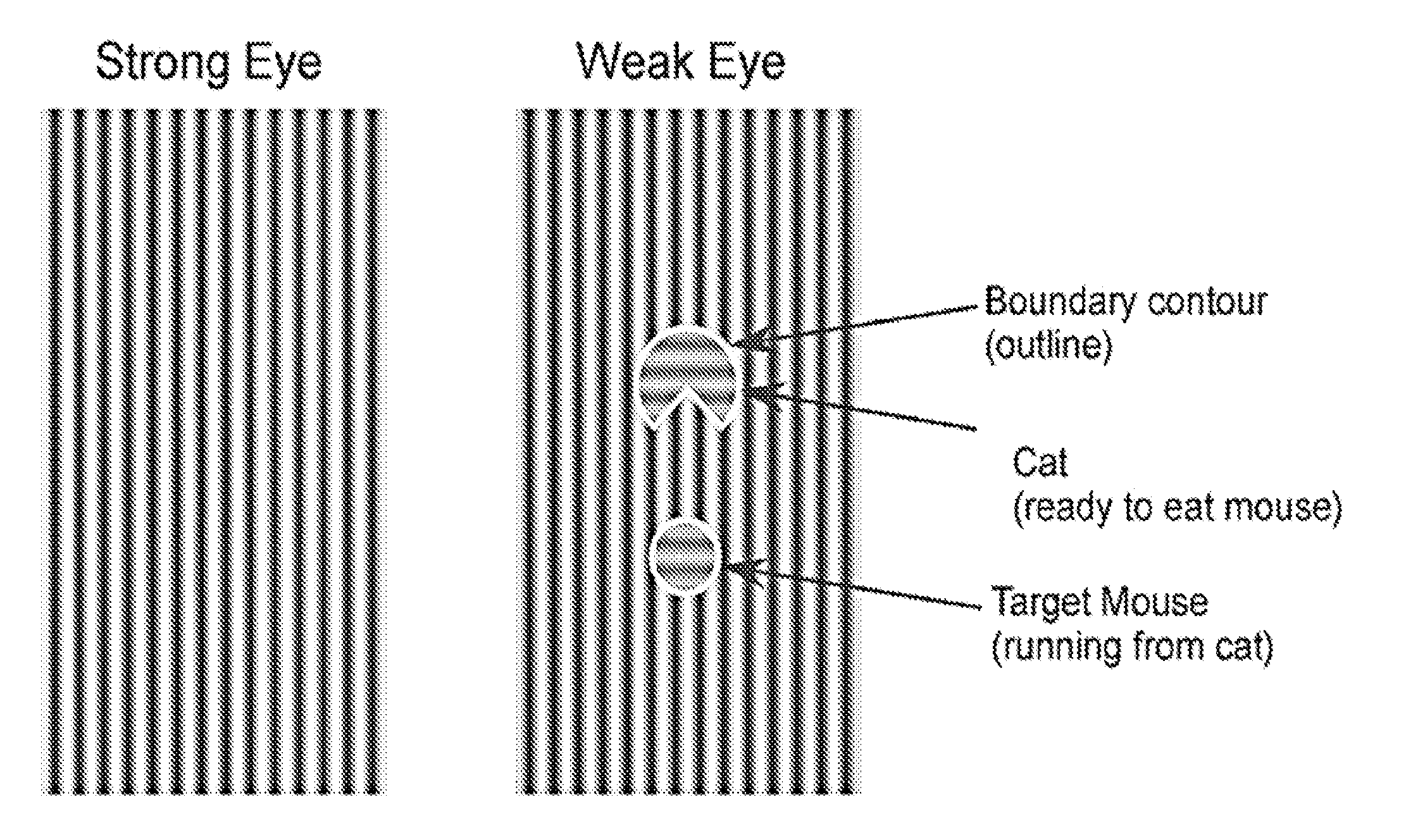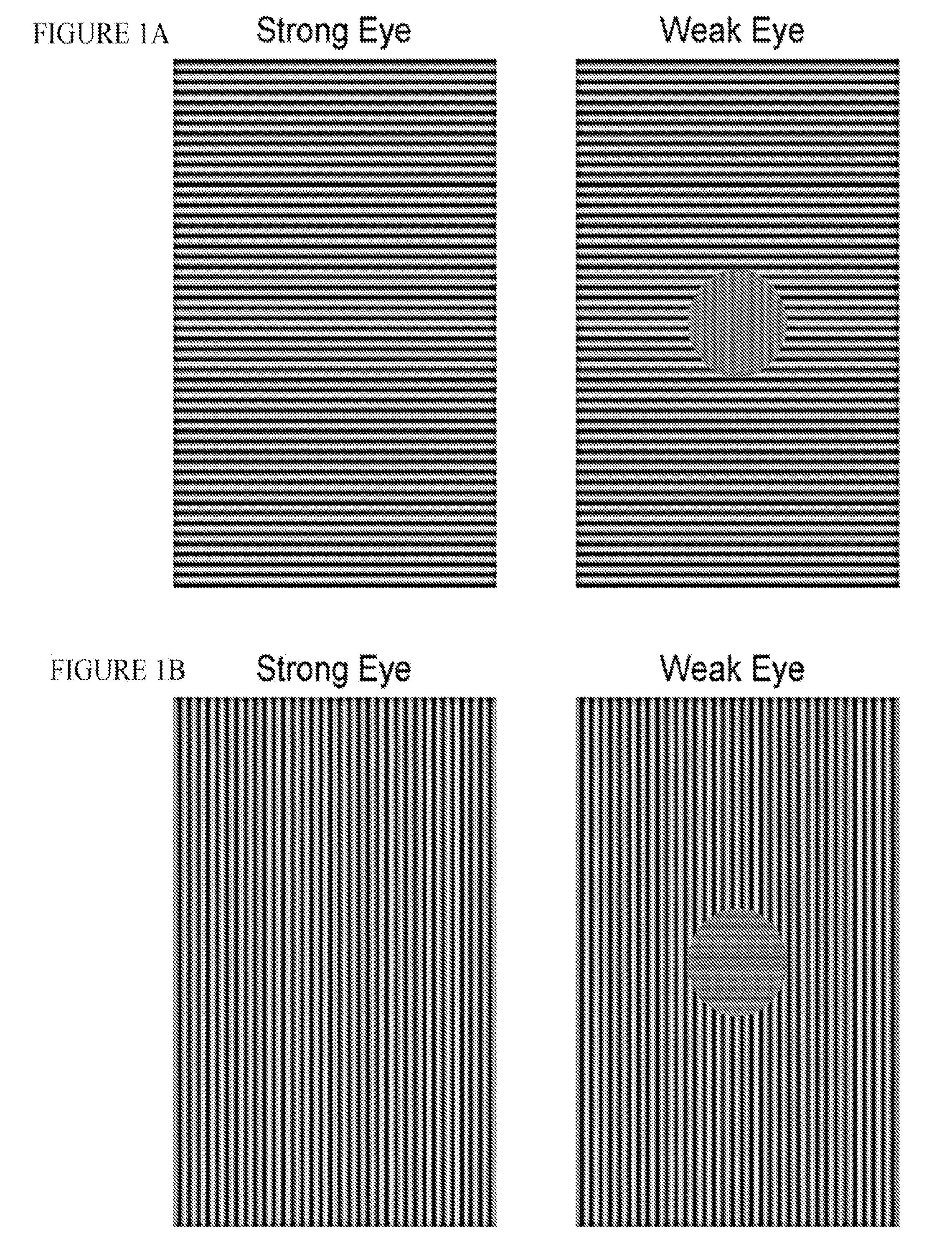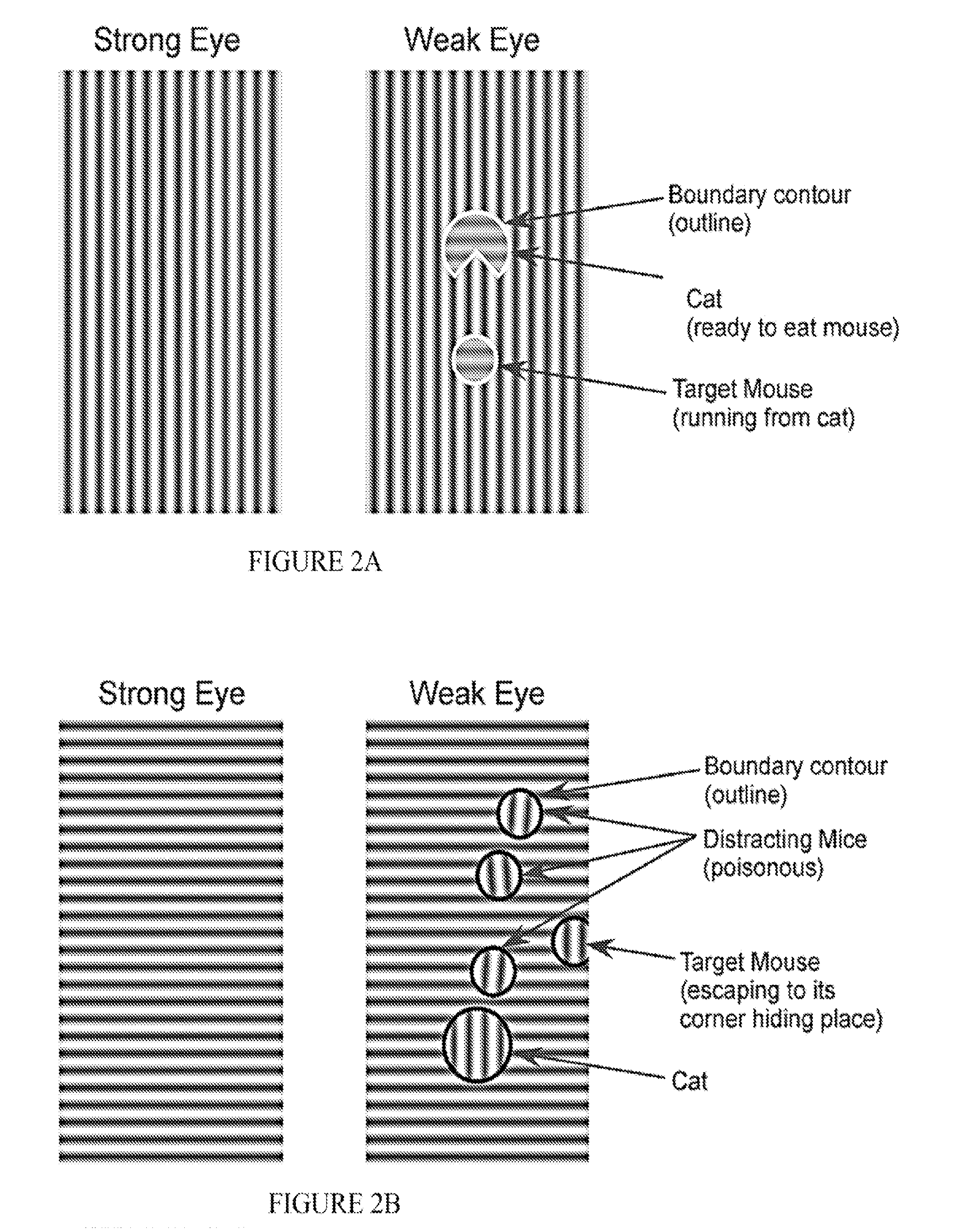Systems and methods for improving sensory eye dominance, binocular imbalance, and/or stereopsis in a subject
a technology of binocular imbalance and system and method, applied in the field of system and method, can solve the problems of reducing binocular depth perception, degrading binocular visual processing, and affecting the visual processing of binoculars, so as to facilitate the presentation of the first stimulus and facilitate the second stimulus
- Summary
- Abstract
- Description
- Claims
- Application Information
AI Technical Summary
Benefits of technology
Problems solved by technology
Method used
Image
Examples
example 1
Training with the Two-Dimensional “Cat and Mouse” Embodiment for a Subject without Fusion Ability Due to Strabismus
[0119]Observer: A female in her twenties with constant esotropia and RE amblyopia participated in the study. She was last treated for amblyopia with the patching method more than 15 years ago. Her visual acuities were 20 / 80 (RE) and 20 / 15 (LE). She was not able to perceive stereopsis due to the lack of binocular fusion ability.
[0120]Procedures: The observer's SED was measured in the foveal region using the binocular rivalry tracking method. As shown in FIG. 1, the stimulus comprised either a vertical disc (a) or horizontal disc (b) surrounded by an orthogonal grating half-image in one eye and the same orthogonal grating half-image in the other eye. The observer was tasked to respond to her instantaneous perception of the oriented grating within the disc area, over a stimulus viewing duration of 1 minute. By presenting the disc half-image to the weak eye, how often the w...
example 2
Training with the Two-Dimensional Cat and Mouse Embodiment for a Subject with Fusion Ability
[0127]Observer: A female in her twenties with strong RE dominance participated in the study. Her visual acuities were 20 / 20 (RE) and 20 / 20 (LE).
[0128]Procedures: The following tests were run to establish baselines in the foveal region before and after the training: SED, stereopsis threshold and stereopsis response time (RT). These test stimuli are shown, respectively, in FIGS. 4-5, 6 and 7 and are described above.
[0129]The cat and mouse embodiment of the present invention, as described in Example 1 above, was implemented during the training. In addition, because the subject was capable of binocular fusion, the difficulty was increased by adding weak boundary contours to the strong eye. This was done by phase-shifting selected areas of the grating in the strong eye that corresponded to the cat grating seen by the weak eye (FIG. 8). In an alternative embodiment, the phase-shifted boundary conto...
example 3
Training with the Three-Dimensional Matrix Scanning Embodiment for a Subject with Fusion Ability
[0132]Observer: A male subject in his thirties with mild RE dominance participated in the study. His visual acuities were 20 / 20 (RE) and 20 / 20 (LE).
[0133]Procedures: The following tests were run to establish baselines in the foveal region before and after the training: SED, stereopsis threshold and stereopsis response time (RT). These test stimuli are shown, respectively, in FIGS. 4-5, 6 and 7. In addition, similar test stimuli were used to test four concentric, parafoveal retinal locations two degrees from the fovea [(2°, 0°), (2°, 90°), (2°, 180°), (2°, 270°)]. A characterization of these tests are provided above.
[0134]A series of three-dimensional matrix scanning embodiments of the present invention were implemented during the training phase. These included the following:[0135]3-D matrix scanning whole-disc (FIG. 12). Here, small circular disc areas were phase-shifted relative to the l...
PUM
 Login to View More
Login to View More Abstract
Description
Claims
Application Information
 Login to View More
Login to View More - R&D
- Intellectual Property
- Life Sciences
- Materials
- Tech Scout
- Unparalleled Data Quality
- Higher Quality Content
- 60% Fewer Hallucinations
Browse by: Latest US Patents, China's latest patents, Technical Efficacy Thesaurus, Application Domain, Technology Topic, Popular Technical Reports.
© 2025 PatSnap. All rights reserved.Legal|Privacy policy|Modern Slavery Act Transparency Statement|Sitemap|About US| Contact US: help@patsnap.com



